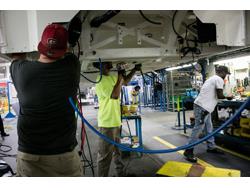Economists Boost Near Term Projections
New York, NY, August 10, 2018--Economists are raising 2018 growth projections after a strong second quarter, but disputes with U.S. trading partners, a fading boost from fiscal stimulus and rising short-term interest rates lead many to believe the boom won’t last much beyond that, according to The Wall Street Journal.
The average estimate for economic growth this year increased to 3%, up from projections of 2.9% last month and 2.4% a year ago, according to The Wall Street Journal’s monthly survey of private economists. They also see the unemployment rate falling to 3.6% by June, which would be the lowest unemployment rate in nearly 50 years. The jobless rate in July was 3.9%.
Consumer spending and business investment were robust in the spring, thanks in part to tax cuts that put more money in household pockets and gave businesses a higher after-tax return on their investments.
“The tax cuts and jump in federal spending will keep the economy buzzing for another 12 months,” said Bernard Baumohl, chief economist of the Economic Outlook Group. “Beyond that, however, I expect to see dark clouds forming that would signal a recession is near.”
Mr. Baumohl isn’t alone in predicting a slowdown after the boost from last year’s tax cuts begins to fade and because rising tariffs between the U.S. and its trading partners could lead to repercussions for the economy. Businesses that were enthused about the tax relief could hold off hiring and investing in the face of trade uncertainty, several economists said.
“Prospects of trade war are eroding business confidence from the Tax Cuts and Jobs Act,” said Kevin Swift, the chief economist of the American Chemistry Council. The chemicals industry is among those facing tariffs on imports, and the association has criticized the tariffs.
The average forecast for growth in 2019 was 2.4%, little changed in recent months. By 2020, the average forecaster projects economic growth will slow to 1.8%. That is down from estimates earlier this year of 2%.
The differences might look small, but they have huge impacts on budgets and well-being. Maintaining 3% growth or higher could help the economy grow out of looming trillion-dollar budget deficits. Moreover, if the administration’s growth forecast is maintained, the economy would double in size over the next 24 years. At the 1.8% rate forecast by economists for the year 2020, it would take 39 years.
At the root of the differing views between the administration and other forecasters is a debate about how tax cuts and regulatory rollbacks will affect growth. The administration has argued tax cuts and deregulation will lead to lasting increases in worker productivity as firms invest more and greater labor-force participation, meaning more workers with greater output.
While the immediate outlook for the rest of 2018 is strong, economists see an 18% chance of a recession beginning in the next 12 months. Those are the highest odds since President Trump’s election 21 months ago.
